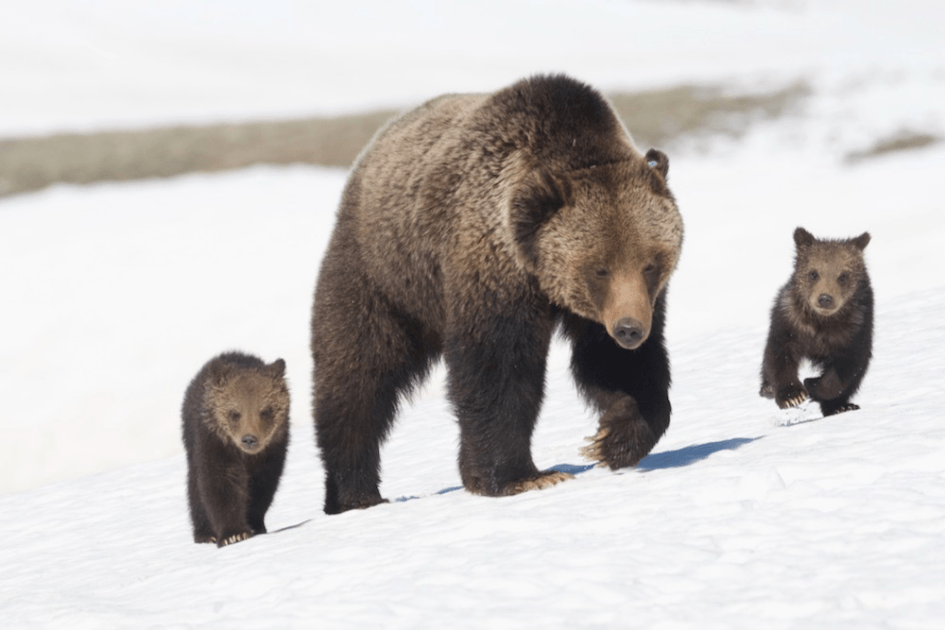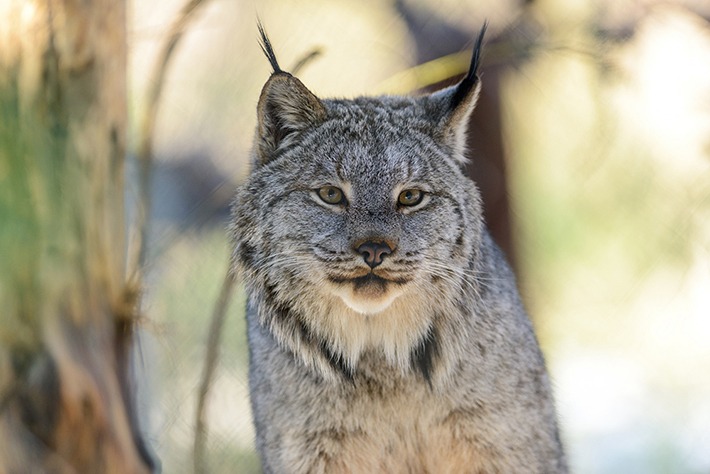Major Court Victory for Imperiled Selkirk Grizzly Bear Population in Idaho

Photo: Glenn Phillips.
It took the Alliance for the Wild Rockies almost six years of litigation fighting the US Forest Service through both the Trump and Biden administrations to try and save what’s left of the imperiled grizzly bear population in Northern Idaho’s Selkirk Ecosystem. But that persistence, along with strong and consistent local opposition to the project, paid off when a federal court recently issued a decision upholding the Alliance’s claims and halted the “Hanna Flats” project with an injunction.
There’s no other way to put it, the Selkirk grizzly bear population is in dire straits. There are only about 50 bears in the population when the very minimum needed for recovery is 100 bears.
Why is the population so low? Because the bears suffer from human-caused mortality at a rate of about 2.7 bears killed by humans per year and grizzlies have very low reproductive rates since females become sexually mature at 4.5 years and only breed every 3-4 years and cease breeding at about 10 years old.
This current mortality rate, which violates the limits set by the federal government, is so high for this tiny population that there are only three years out of the last 30 with higher mortality rates.
There is really no hope of recovery for this imperiled population unless the government starts complying with road density limits to protect grizzly bear habitat since it’s well-documented that most human-caused grizzly mortalities occur near roads.
The Court Order in this case found the project violates federal law since the government’s own management plan for the area limits road construction to protect grizzly bears. Moreover, the court found the government has been violating the road construction limit for many years, and was continuing to violate it with this project.
The Court also found that the government’s attempt to secretly change the management plan to allow more roads without the required public process for amendments to the management plan was also illegal. The Court Order found that changing and weakening the most important substantive Plan provision for grizzly bears in this area – the road limits – is a modification that requires a Plan amendment. But until such an amendment occurs, the road limits remain in effect. The Court then enjoined the project from proceeding for these violations of federal law.
This is a big win for grizzly bears, but in addition to protecting the grizzly bears, this decision also protects the rights of the homeowners in this area — who strongly opposed massive clearcutting operations that would destroy the forest around their homes and trails, and lead to harmful sedimentation of waterways. Throughout the years of litigation, they bravely stood up and spoke truth to power to protect their home. There is no doubt that their resistance and strength helped bring about this victory.
The Alliance for the Wild Rockies is a grassroots conservation group that focuses on protecting rare grizzly bear populations, endangered species, and functioning forest and river ecosystems on public lands in the Northern Rocky Mountains of Idaho and Montana.

Canada lynx. Photo by Eric Kilby. cc-by-sa-2.0.
The Alliance for the Wild Rockies, Council on Wildlife and Fish and Native Ecosystems Council filed a federal lawsuit last week to protect habitat for three rare wildlife species — grizzly bears, lynx, and sage grouse — in the Gravelly Mountains of Montana, which is an area that provides a critical wildlife corridor connecting the Yellowstone area to other mountain ranges in Montana. The challenged government action is called the “Greenhorn” project and it allows destructive logging, road-building, and burning activities across thousands of acres of public lands in this key wildlife corridor zone in the Beaverhead-Deerlodge National Forest.
We are deeply disappointed that the government would authorize this destructive project on our public lands considering the number of court rulings that have found similar projects illegal because such projects violate a number of federal laws designed to protect rare wildlife species.
The project area is enormous. It’s located about 10 miles south of Virginia City, Montana and calls for bulldozing in 28.7 miles of new and rebuilt logging roads to enable logging and burning over 17,000 acres or 26.5 square miles in prime wildlife habitat, much of it in inventoried roadless areas.
The government illegally eliminated 1.1 million acres of lynx habitat protections on the Beaverhead -Deerlodge National Forest in 2020, and it relies on that illegal removal to authorize logging in lynx habitat here. Multiple federal courts have found this to be illegal, and the government knows it.
Sage grouse populations are also in very steep decline and the federal government is desperately trying to keep from having them listed under the Endangered Species Act. Consequently, destroying their habitat with clearcutting, burning, and bulldozing simply makes no sense. Nonetheless, the government never applied their own mandatory sage grouse protections to this project.
Also, the Beaverhead-Deerlodge Forest Plan requires that 60% of the Gravellies be managed for secure grizzly habitat. Currently only 54% of the Gravellies provide secure habitat for grizzlies; the Greenhorn project would reduce grizzly secure habitat by one third. At the same time the Montana Department of Fish, Wildlife, and Parks is trucking grizzly bears from the Glacier ecosystem to the Yellowstone ecosystem for genetic connectivity, — why not just follow the law, protect the grizzly corridor, and let grizzlies walk there on their own? This government action just makes no sense.
This is an important corridor where grizzlies from Yellowstone could travel to breed with grizzlies from other isolated grizzly populations, and do it without trucks and for free.
What happens when the executive branch of the federal government breaks the law? The First Amendment of the U.S. Constitution not only guarantees freedom of speech, it also gives citizens the right to sue the federal government for very good reasons. If someone throws a brick through a window, the police enforce the law. But when a federal executive agency breaks the law, the citizens must stand up to enforce the law. This is how the civil justice system works and citizens should never be shamed or intimidated from using the civil justice system to hold the government accountable to the law.
We are not afraid to take federal agencies to court to make them follow the law because the Constitution is on our side. Our government does not exist to serve the for-profit interests of the billionaires. Our government exists to protect our land, water, air, and wildlife for current and future generations. Public lands are for the public — not private profit — and we will continue to stand up for this principle despite the name-calling and threats we are always subjected to by politicians and special interests. This is our home and we will protect it. Their money and scare tactics will not stop us.
If you agree, please consider helping us and also helping Counterpunch for publishing columns like this.
No comments:
Post a Comment